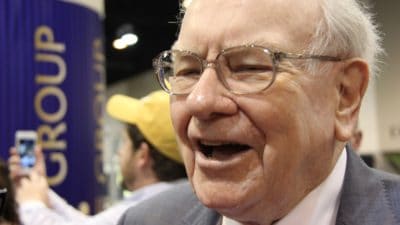The end of the year can be a good time to review one’s finances. One common New Year’s resolution is to boost one’s income. But often that involves working longer hours. Instead, I would focus on increasing my passive income in 2022. I think I could do that by putting aside a relatively modest sum each month and investing it in dividend shares.
Here’s an example of how I could do that with £30 a month, roughly a pound a day.
Getting ready to invest
To buy dividend shares, I would need some sort of trading account. That could be a share dealing account, or maybe a tax-efficient structure like a Stocks and Shares ISA. It doesn’t need to take much time or effort to set up such an account. First I’d do some research to figure out which one would suit my needs best. That monthly £30 adds up to £360 a year. Investing that sum, I’d want to minimise costs. So I’d look carefully at the fees and charges of the different options available to me.
Then I’d start saving. I think putting a pound coin in a piggy bank each day would be a good physical reminder to me of the disciplined progress I was making as an investor. But another option would be to set up an automatic bank transfer for each month.
Learning about dividend shares
After that, I would use the time while my pounds piled up to learn more about dividend shares.
Not all companies pay dividends, and those that do can cancel them at any moment. So I would want to look into companies that I thought might be able to pay me attractive dividends in years to come.
To do that, two things would be important. First would be the company’s dividend paying capacity. Does the company have a business that is likely to continue producing surplus cash it can use to fund dividends? Some clues to that would come from its financial reports. But I’d also want to consider what might happen in future. For example, will demand for its products and services be sustained? Does it have some competitive advantage which would allow it to charge a price premium?
Secondly I’d want to consider the current share price. What is known as dividend ‘yield‘ is basically a company’s dividend expressed as a percentage of its share price. Let’s say a company pays out a 10p per share dividend. If its shares trade at £1, the yield is 10%. So a £360 investment could generate £36 of passive income per year. But if the share price when I buy is £10, the yield would only be 1%. In that case, a £360 investment would give me £3.60 of passive income in a year. The price at which I buy a share can have a big impact on yield and therefore on the size of my potential passive income streams.
Buying shares for passive income
I wouldn’t want to put all of my money in one share, though. To help reduce my risk, I would diversify across different companies. With £360 a year, I would have enough to buy a couple of different companies a year, at least.
I might start, though, by getting some diversification from a single pick. A unit trust which invested in different companies could work well in this regard. One such share I have held myself in the past for its passive income potential is Income & Growth VCT. But like any shares, it carries risks. The trust invests in early stage companies, so if they do not turn out well its own income can fall.
Once I had enough money, I would be more interested in investing in individual shares, although still as part of a diversified portfolio.
Some shares seem to be favourites among dividend investors and come up often in discussion. For example, tobacco high yielders such as British American Tobacco and utilities like United Utilities can be popular with many investors. But I would want to make my own decisions about what shares best meet my own investment objectives. What suits other investors might not be right for me. For example, I might decide for ethical reasons that I didn’t want to invest in tobacco shares. From a financial perspective, I may decide that the yield from utilities didn’t compensate me enough for the risk of low revenue growth and price regulation at a time of inflationary pressures.
Passive income mistakes
What I definitely wouldn’t do, though, is just look to maximise my passive income by putting my money straight into the highest yielding dividend shares.
Why not? After all, if passive income is my objective surely the more I get the better it is? Not necessarily. That’s because a high yield can often be a red flag. It may be that the City is anticipating lower profits or dividends in future, and has marked down the share price accordingly. That can lead to a juicy looking yield. But if I buy that share and the dividend cut comes to pass, I might not get nearly as much passive income as I had expected. This is an example of what is known as a ‘value trap‘.
Consider as an example the company Ferrexpo, which at times this year has offered a yield of 13%. That sounds amazing. But on closer examination, a couple of important factors stand out. Last year’s dividend was more than triple that of the year before. On top of that, Ferrexpo’s profits come from a group of mines concentrated in one area in Ukraine. With political risk currently threatening Ukraine, that could mean profits fall in future.
That doesn’t mean Ferrexpo might not still be a suitable investment for some people. It could maintain profits, after all, and political tensions in Ukraine may fall. It may turn out not to be a value trap at all, but just a cheap share with a high yield. But with £30 a month to invest, my risk tolerance would be modest. I wouldn’t want to tie up a sizeable proportion of my investments in shares that may well not give me the level of passive income I expected when I bought them. Instead, I’d focus on finding shares that offered me an attractive combination of passive income reward with risk. I’d be willing to trade some reward in return for lowering my risk.







